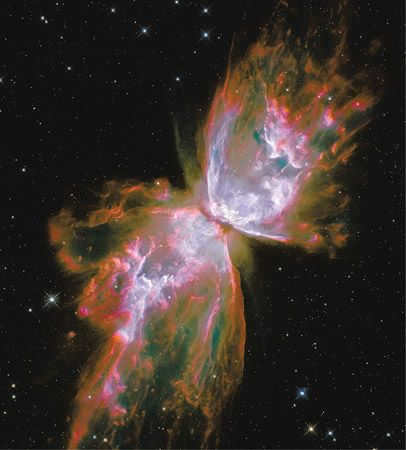In the vast expanse of the ocean, an intriguing event unfolded in 1930. Subramanian Chandrasekar, a young physicist from India who had recently completed his studies at the University of Madras, embarked on a voyage to Europe to pursue further education at Cambridge University.
Prior to this remarkable journey, the budding scientist had attended a series of lectures on quantum mechanics by the renowned German theorist Arnold Sommerfeld. During these lectures, Sommerfeld unveiled the latest advancements in quantum statistics and highlighted its potential in explaining the extraordinary properties of a unique stellar phenomenon – white dwarfs.
Therefore, with a surplus of leisure time on his hands, Chandrasekar retreated to his cabin and engaged in deep contemplation regarding the statements made by Sommerfeld. Ultimately, the youthful scientist arrived at the realization that the theory expounded upon by the German physicist in his lectures failed to acknowledge a crucial factor that undeniably altered the core essence of the situation.

Subramanian Chandrasekar, an Indian physicist, made calculations that revealed that the mass of any white dwarf could be up to 1.4 times greater than the mass of the Sun. However, ordinary stars can be found that are tens of times more massive than the Sun.
Upon realizing the significance of his findings in understanding the end of stars’ long lives, the young physicist knew he had made a breakthrough. It would take another 53 years, until 1983, for Chandrasekar to receive the Nobel Prize. However, his path to recognition was not an easy one. Initially, the esteemed astrophysicists and theorists were skeptical and unwilling to publish the young Indian’s results…
Now, let’s divert our attention from Chandrasekar’s groundbreaking discovery and shift our focus back to the early 20th century. During that time, thanks to advancements in the field of physical sciences, scientists were granted a remarkable glimpse into the diverse world of stars. Prior to this, it was commonly believed that all stars shared similar characteristics to our very own Sun. However, it became apparent that while certain global traits such as mass, luminosity, and radius may vary slightly, stars exhibited a wide range of unique qualities.
When American astronomer G. Ressel and Danish scientist E. Herzprung made the breakthrough discovery of the main sequence and giant stars, it appeared that the multitude of stars could be organized into a coherent system. This led to the subsequent undertaking of meticulous statistical studies, delving into the frequency of occurrence of stars with varying luminosities, masses, and radii.
In the course of studying astronomy in 1910, a significant discovery was made that astronomers would later recognize as the discovery of white dwarfs.
The history of the scientific world’s first encounters with white dwarfs is somewhat unclear. Generally, the discovery of white dwarfs is often attributed to American astronomer W. Adams. In 1914, Adams received and extensively studied the spectrum of Sirius B, the satellite of the brightest star in the sky, Sirius.
However, it should be noted that a year prior, Dutch astronomer Van Maanen obtained the spectrum of another white dwarf, a star named after him, Van Maanen 2.
Interestingly, it was actually the famous American astronomer Ressel who discovered 40 Eridanus B, the first white dwarf, a year before Maanen’s discovery.
Following the identification of these three entities, commonly referred to as classical white dwarfs, there was a substantial hiatus. It was not until the 1930s of the previous century that the inventory of these celestial bodies began to expand with fresh findings.
Due to the minimal luminosity of white dwarfs, they were primarily detected in proximity to the Sun until recently. However, the advent of the Hubble Space Telescope facilitated the detection of white dwarfs even in far-flung globular clusters…
Despite the fact that numerous captivating astronomical objects have been discovered in the past century, the discovery of white dwarfs can be regarded as one of the paramount accomplishments of 20th-century astronomy.
The reason behind this phenomenon is that through the examination of these select celestial bodies, such as white dwarfs, scientists have been able to address several fundamental inquiries in astronomy, leading to a fresh perspective on the vast and varied world of stars and their evolutionary paths.
Regarding the distinct characteristics of white dwarfs, they possess certain attributes. These stars are characterized by their high temperatures and have an average mass of approximately 0.6 times that of the Sun, with a relatively low luminosity ranging from 0.02 to 0.003 times that of our own star.
However, despite their small size, comparable to that of a globe, white dwarfs possess an immense mass, indicating that an extraordinary density of matter is concentrated within this relatively small volume. In fact, the average density of matter in a white dwarf is colossal, measuring about 1,000,000 grams per cubic centimeter.
In 1926, the concept of degenerate gas emerged in the field of physics, providing a deeper comprehension of the characteristics of white dwarfs. British scientist R. Fowler applied these innovative concepts to the study of these peculiar celestial bodies, leading astronomers to believe that the mysteries surrounding white dwarfs had been resolved.
According to the principles of elementary physics, the pressure in a typical gas is determined by the product of its density and temperature. Consequently, at absolute zero, the pressure is expected to be zero.
However, if the gas is made up of particles with spin that is a half-integer – fermions, which include electrons, then at extremely low temperatures, the Pauli exclusion principle – one of the fundamental laws of the microscopic world – comes into effect. This principle states that two identical particles with half-integer spin cannot occupy the same state simultaneously.
Based on this principle, the pressure of a compressed electron gas remains finite even at absolute zero. Its magnitude is solely dependent on the density and increases rapidly as the density increases.
Consequently, this rapid increase in pressure implies that the average velocities of electrons must also increase when the degenerate gas is compressed.
However, after acquiring this physical literacy, a legitimate question arises: what is the relevance to white dwarfs? In contrast to most ordinary stars, whose interiors reach temperatures in the tens of millions of degrees, white dwarfs do not. The reason for this is that as density increases, so does temperature. At a certain threshold, the gas becomes degenerate and begins to exhibit behavior akin to a temperature of zero.
For instance, at a density of 1000-10 000 grams per cubic centimeter and a temperature of approximately 10 million degrees, the electron gas already becomes degenerate. In such cases, its pressure is practically independent of temperature and remains the same as it would at absolute zero! Considering that white dwarfs have much higher densities, their temperature can be regarded as effectively zero.
Fowler was the first to recognize that the pressure in white dwarfs arises from degenerate electron gas. Based on this finding, he inferred that these stars should have the size of a globe and densities of about one ton per cubic centimeter.
Shortly thereafter, Chandrasekar and the English astrophysicist E. Milne independently calculated models of the internal structure of white dwarfs. These calculations revealed that due to the relatively high compressibility of degenerate electron gas, the size of these bodies should decrease as their mass increases. It appeared that everything had been elucidated.
However, Chandrasekar, a young physicist from India who was traveling from India to Europe, noticed something interesting. He observed that white dwarfs with larger masses actually have smaller sizes. This led him to conclude that as the mass of a white dwarf increases, its density also increases. Additionally, he discovered that as the density of the degenerate gas increases, the average velocities of electrons also increase.
However, this situation cannot continue indefinitely. There will eventually come a point where the velocities of electrons approach the speed of light. Since it is impossible for velocities to continue increasing, a phenomenon known as relativistic degeneracy will occur.
This will lead to a reduction in the rate at which pressure increases as density increases. It appears that if the density exceeds 1,000,000 grams per cubic centimeter, this growth occurs in proportion to the density raised to the power of 4/3. In other words, when this immense density is reached, the gas should compress more readily, resulting in a faster decrease in the radius of the white dwarf as its mass increases compared to what the original theory suggested.
Through relatively straightforward mathematical analysis, it has been determined that as the mass of the white dwarf approaches a specific critical value, its radius converges to zero! This critical mass, known as Chandrasekar’s limit, is 1.46 solar masses and was named after an Indian physicist.
That is, if we precisely adhere to Chandrasekar’s theory, a white dwarf with a critical mass possesses an unbounded density and a radius of zero. To the majority of astrophysicists, these conclusions appeared ludicrous, and the scientist had to endure a arduous struggle before his work was acknowledged in 1931.
However, subsequent analysis revealed that the radius of a white dwarf with a critical mass actually remains finite, indicating that infinite density is not attained in this scenario.
The truth is, when matter attains critical density, the electrons are assimilated by the nuclei, causing the protons within them to transmute into neutrons.
Once this process is initiated, the rate of pressure increase significantly decelerates. Consequently, mechanical equilibrium becomes unattainable, and both of these effects lead to only a marginal reduction in the critical mass.
Based on the fact that the pressure inside a white dwarf remains constant regardless of its temperature, scientists in the field of astrophysics have determined that a white dwarf can exist indefinitely in this state. By gradually releasing the heat energy stored within its core through the forward motion of atomic nuclei, which do not undergo degeneration, the white dwarf will cool down over time without significantly changing in size. This process is similar to how a hot cobblestone cools. Additionally, as white dwarfs have low luminosities, the thermal energy they possess is sufficient to last for a long duration.
The above passage serves as an introduction to the topic.
Additional Reading
“Giants vs Dwarfs”
“Giants vs Dwarfs” When it comes to the formation and growth of perch populations, there is an unfortunate trend that fishermen encounter: only around 10-15% of the predators in the water reach impressive sizes. The majority of perch individuals are actually born smaller in size.
Dwarfs
Dwarfs are legendary beings known for their diminutive stature and often depicted as a distinct race. Found in various mythologies, these mystical creatures are said to inhabit caves, forests, and even bodies of water, showcasing their mastery over their chosen habitats. In European folklore, dwarfs are particularly associated with mountains and the rugged landscapes they call home.
***Dwarfs***
***Dwarfs*** I had a long-standing hesitation about including dwarfs in the compendium of mythical creatures. At first glance, they appear to be nothing more than diminutive humans. However, after delving into the extensive literature on Norse and Celtic mythology, I came to the realization that dwarves are indeed a unique form of undead. Yet, this undead variant does not belong to our realm. Hence, dwarfs possess a truly fantastical nature.
Dwarfs
Dwarfs are individuals who have a significantly diminutive stature, measuring less than 1 meter when they reach adulthood or just slightly surpassing this height. These individuals have been documented since ancient times. For instance, Pliny mentions that Julia, the niece of Augustus, had a companion whose height was 2 feet and 1 decimeter (0.602 meters); Varron
Dwarfs
The true origins of nanism (derived from the Greek word “nanos” meaning dwarf) were a mystery until the early 20th century, and various ridiculous theories were proposed by scientists prior to that. Presently, there are two scientific theories: harmonious and disharmonious nanism. Disharmonious dwarfs
Do dwarfs possess high levels of intelligence?
Do dwarfs possess high levels of intelligence? The renowned actor Michael Dunn, who was not only a theater school instructor but also an opera vocalist and recently passed away, achieved an impressive intelligence score of 178 on the Term scale (considered genius level which reaches 150). It is worth noting that despite his stature of only 94 centimeters, he is not an outlier in this regard.
Dwarfs are fools.
The Renaissance was the golden age of dwarfs in Europe, where they served as jesters in every royal court, whether it be for a king, prince, aristocrat, or abbot of a monastery.
Carnival dwarfs
Carnival dwarfs were not only popular among the wealthy and noble, but also drew crowds of common people to marketplaces and inns. One such dwarf, Mattei Booginger, gained fame and was known as the “Dwarf of today”.
Dwarfs in the Modern Era
The role of dwarfs in society has evolved significantly over time. Once revered and widely known, dwarfs today unfortunately evoke feelings of regret. In the past, the powerful elite would often surround themselves with dwarfs, while the common people would flock to circuses to marvel at their presence.
The Rise of Artificial Dwarfs
During the decline of the Roman Empire, the first attempts to artificially create dwarfs were made. These endeavors proved to be successful, leading to the emergence of a specialized trade dedicated to the production and sale of artificial dwarfs. Among the lower classes, agents would facilitate the acquisition of these miniature individuals.
Custom-made Dwarfs
In China, a new method of dwarf production has emerged. To expand the market for dwarfs, the Chinese have introduced a system where customers can order dwarfs with specific sizes and shapes from skilled artisans.
“Gigantic and miniature.”
“Gigantic and miniature.” When it comes to forming schools of perch and their growth, there is an unfortunate trend for fishermen: only about 10-15% of the total number of predators in the reservoir reach impressive sizes. The majority of perch individuals are born smaller in comparison.
THE TALE OF GIANTS AND DWARFS
Giants and dwarfs are fascinating creatures that captivate the attention of travelers. One remarkable example is the rattan palm, which is often referred to as “the devil’s rope.” Standing tall with a trunk that can reach up to 400 meters in length, this palm has a unique way of reaching for the sun. It clings to nearby trees with thorny thorns, wrapping around them like a rope, just to stretch its pinnate leaves towards the rays of sunlight.
Similarly, white dwarfs are an intriguing type of star that can be found throughout our galaxy. Despite their low luminosity, they possess enormous mass. These compact objects are roughly the same size as our Earth. Unlike other stars, white dwarfs do not undergo nuclear reactions due to their low internal temperature. Instead, they gradually release stored energy through the emission of electromagnetic waves. The surface temperature of white dwarfs can vary, ranging from 5,000° K in older, “colder” stars to a scorching 50,000° K in younger, “hotter” stars.
The masses of white dwarfs are limited to 1.4 solar masses, despite having a relatively high density ranging from 1,000,000 to 100,000,000 g/cm³
White dwarfs are objects in the final stage of evolution with a density that is a million times greater than ordinary stars. They make up 3-10% of the stars in the Milky Way. Unlike stars, white dwarfs do not undergo thermonuclear reactions in their core.
In regular stars, X-rays are generated by the corona, while in white dwarfs, the photosphere serves as a similar source.
Once the Sun exhausts its helium (in approximately 100 to 110 million years), it will transform into a white dwarf.
White dwarfs that are young have surface temperatures that exceed 2 . 10 5 °K. An iconic instance of this can be seen in the images captured of Sirius, the most radiant star in our celestial sphere.
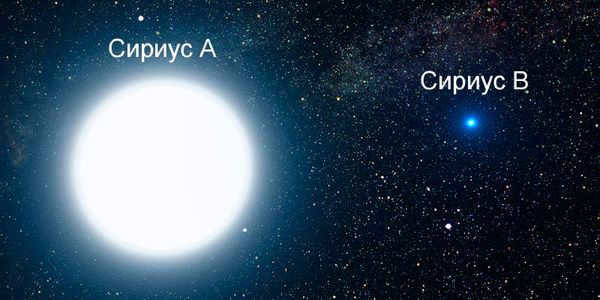
The Chandra X-ray telescope was used to acquire these images. In terms of optics, Sirius A outshines its companion Sirius B by a factor of 10,000, but when it comes to X-rays, the white dwarf shines brighter.
The Composition of These Objects
White dwarfs are far more complex and fascinating than they might initially appear. While there may not be any nuclear reactions and the temperature is low, the question arises: where does the high pressure that prevents gravitational collapse come from? It turns out that the quantum properties of electrons play a crucial role in this phenomenon. Under the influence of gravity, matter becomes so compressed that atomic nuclei can penetrate the electron shells of neighboring atoms. This means that the electrons are no longer bound to specific nuclei and instead have the freedom to move throughout the space inside the star. The nuclei, on the other hand, form a tightly bound system similar to a crystal lattice.
Here’s where things get really interesting. Even as the white dwarf cools down and radiates energy into space, the average velocity of the electrons remains constant. This is because, according to the laws of quantum mechanics, two electrons with half-integer spins cannot occupy the same state (known as Pauli’s principle). Therefore, the number of different states available to the electrons in the white dwarf must be equal to or greater than the number of electrons themselves. However, it is also evident that the number of states decreases as the velocities of the electrons decrease. In the extreme scenario where all the electron velocities become zero, they would all occupy a single state (or more precisely, two states, considering spin projection). Given that there are numerous electrons in a white dwarf, it is necessary for there to be a large number of states, and this is maintained by the conservation of their velocities.
The high velocities of the particles result in a significant pressure, which counteracts the gravitational collapse. However, it should be noted that if the mass of the object is too large, gravity will ultimately overcome this pressure barrier.
Evolution
White dwarfs are often the final stage in the life cycle of average-sized stars. When a star has depleted its nuclear fuel, it enters the red giant phase and sheds some of its material, transforming into a white dwarf. During this process, the outer shell, which is composed of heated gas, disperses into space and appears as a nebula when observed from Earth. Over a span of hundreds of thousands of years, these nebulae gradually dissipate, leaving behind dense cores known as white dwarfs. These white dwarfs cool down slowly, much like a red-hot piece of metal, due to their small surface area. Eventually, they will evolve into brown (or black) dwarfs, which are compact masses of matter with lower temperatures. However, according to calculations, this transition could take billions of years.
Clearly, the detection of brown dwarfs is hindered by their dim brightness. One particular brown dwarf can be found in the Hydra constellation. It possesses a luminosity of merely 22.3. The distinctiveness of this discovery lies in the fact that previous brown dwarfs that were found were part of binary systems, enabling their detection, whereas this one is solitary. Its detection was possible solely due to its close proximity to our planet: it is a mere 33 light-years away.
It is believed that the existing brown dwarfs are not yet fully cooled down (not enough time has passed) and are considered “underdeveloped” stars. It is well known that stars are formed from gas and dust clouds, and a single cloud can give rise to multiple stars of varying masses. If the contracting gas clot has a mass 10-100 times less than that of the Sun, it gives rise to brown dwarfs. These objects are heated by the intense gravitational compression and emit infrared radiation. Unlike regular stars, brown dwarfs do not undergo nuclear reactions.
Exploration
By the early 1930s, scientists had developed a general theory about the inner structure of stars. By considering a star’s mass and chemical composition, researchers were able to calculate various observable characteristics such as its luminosity, radius, and surface temperature. However, this understanding was challenged when an unassuming star called 40 Eridana V was discovered by English astronomer William Herschel in 1783. This star had a higher temperature than expected, yet its luminosity and size were too small. According to classical physics, this was inexplicable. Later on, more unusual stars were discovered. One of the most famous examples was the observation of Sirius B, an invisible companion to the brightest star, Sirius. German mathematician and astronomer Friedrich Wilhelm Bessel noticed that Sirius was not moving in a straight line, but rather in a slight sinusoidal pattern. After about ten years of observation and analysis, Bessel concluded that there must be a second star near Sirius, exerting a gravitational influence on it.
After A. Clarke designed a telescope with a lens diameter of 46 cm in 1862, Bessel’s prediction was proven to be accurate. This telescope was the largest in the world at that time. In order to assess the lens’s quality, it was aimed at Sirius, the brightest star. As Bessel had anticipated, another star, a faint one, became visible in the telescope’s field of view.

The temperature of Sirius B has been discovered to be 25,000 K, which is 2.5 times higher than the temperature of the bright Sirius A. This finding implies that Sirius B has an incredibly high density of 106g/cm³ due to its small size. In fact, if you were to have a thimbleful of this matter, it would weigh a million tons on Earth.
It has been discovered that white dwarfs are actually the remnants of regular stars. Regular stars maintain their equilibrium through the pressure force of the glowing plasma, which counteracts the force of gravity. In order for this equilibrium to be maintained, the star needs internal sources of energy. Without these sources, the star would lose energy and emit streams of light into space, eventually succumbing to the gravitational forces. The internal source of energy for regular stars is thermonuclear reactions that transform hydrogen into helium. Once all the hydrogen in the central regions of the star is depleted, the equilibrium is disrupted and the star begins to collapse under its own gravity.
The typical density of objects around us is a few grams per 1 cm³ (similar to the density of an average atom). This is also the average density of stars like our Sun. However, if a regular star is compressed 100 times, the atoms will become tightly packed together and the star will essentially become one giant atom. At such high densities, the energy levels of individual atoms merge together. Electrons then form what is known as a degenerate electron gas, a unique quantum state where all the electrons within a white dwarf interact with each other and form a collective whole. It is this electron gas that resists gravitational compression, effectively turning the star into a dense core known as a white dwarf.
White dwarfs are celestial bodies that have a significant mass (approximately the same as the Sun) but a small size (comparable to the radius of the Earth). They form as a result of the evolution of red giants and have a radius that is less than the Chandrasekar limit for their specific mass. These stars have unique properties due to the fact that they have stopped the process of thermonuclear energy production. It is believed that there are between 3% and 10% of white dwarfs in our Milky Way galaxy, making up a significant portion of the overall stellar population.
Discovery’s Historical Background
In 1844, Friedrich Bessel, a German astronomer and mathematician, observed Sirius and noticed a slight deviation in its motion. From this observation, he hypothesized that Sirius had an invisible companion star with a large mass. This hypothesis was later confirmed in 1862 by Alvan Graham Clark, an American astronomer and telescope builder, who discovered a dim star near Sirius while aligning the largest refractor of that time. This dim star was later named Sirius B. Sirius B, a white dwarf, has a low luminosity and its gravitational field significantly affects its bright companion, indicating that it has a small radius and a significant mass. This discovery led to the identification of a new type of object known as white dwarfs. The second object of this kind, called Maanen, was found in the constellation of Pisces.

The formation process
White dwarfs mark the final stage in the life cycle of a small star, similar in mass to the Sun. But how do they come into existence? When a star, like our Sun, exhausts all of its hydrogen fuel in its core, the core contracts to extreme densities while the outer layers expand significantly. This expansion, coupled with a decrease in overall brightness, causes the star to transform into a red giant. Eventually, the pulsating red giant sheds its outer shell, which is loosely held together by the hot and incredibly dense core. This discarded shell then expands and forms a planetary nebula. It is clear that red giants and white dwarfs are intricately connected.
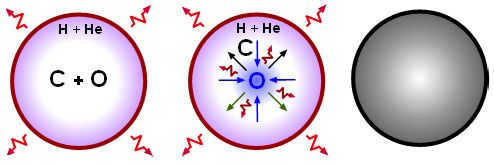
The core undergoes compression to reach very small sizes, but it still remains within the Chandrasekar limit, which is the maximum mass a star can have to exist as a white dwarf.
Classification of white dwarfs
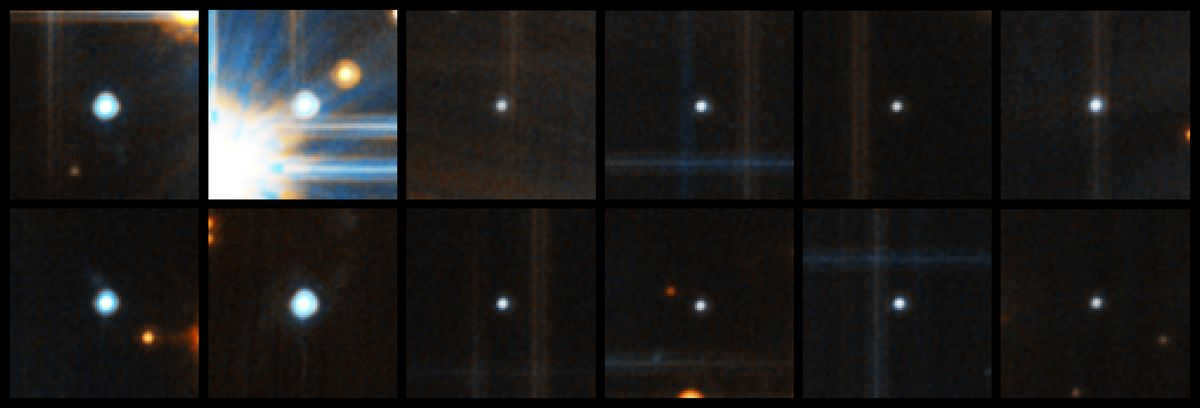
From a spectral perspective, white dwarf stars can be classified into two main groups. The most common type, known as the DA class, makes up approximately 80% of all white dwarfs. These stars lack spectral lines associated with helium. On the other hand, there is a rarer type called the DB class, which lacks hydrogen lines in its spectrum while still possessing helium lines. American astronomer Iko Iben proposed various scenarios to explain the origin of white dwarf stars. One of his theories suggests that periodic flares occur in the helium layer of red giants, leading to the formation of white dwarfs. Iben also proposed a mechanism for the shedding of the outer shell during different stages of the helium flare development, both at its peak and in the period between two flares. The formation of white dwarf stars is closely tied to this shell shedding mechanism.
A natural gas
Prior to Ralph Fowler’s 1922 publication “Dense Matter,” the density and pressure characteristics within white dwarfs were enigmatic. The high density and physical attributes of this structure appeared contradictory. Fowler proposed that, unlike main-sequence stars, which are governed by the equation of state of an ideal gas, the equation of state in white dwarfs is determined by the properties of a degenerate gas.
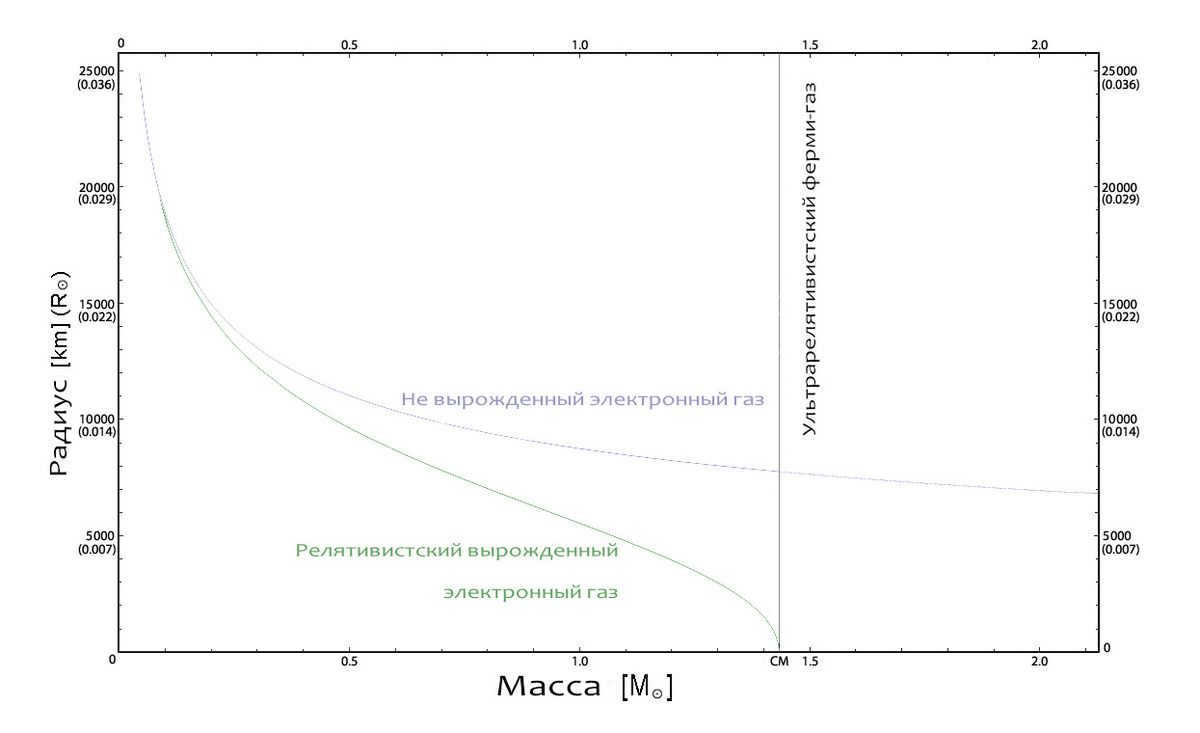
A degenerate gas is created when the separation between its particles becomes smaller than the de Broglie wave, leading to the influence of quantum mechanical effects resulting from the individuality of the gas particles. In white dwarfs, the immense densities cause the atomic shells to collapse under internal pressure, transforming the substance into an electron-nuclear plasma. The behavior of the electronic component can be described by the characteristics of a degenerate electron gas, much like how electrons behave in metals.
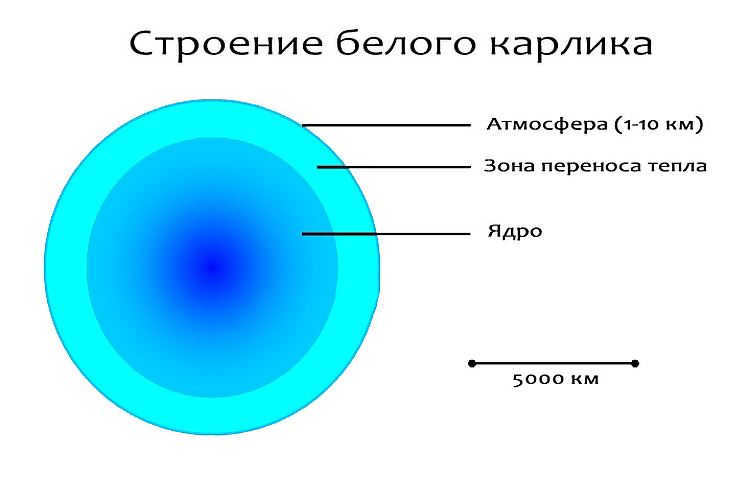
Development
The propulsion of the star along the Hertzsprung-Russell diagram occurs due to the discharge of helium and shedding of outer shells by the red giant, which also determines its primary chemical composition. Subsequently, the white dwarf remains in a stable state throughout its life cycle until it cools down, leading to a loss of luminosity and rendering the star invisible. This marks the beginning of the black dwarf phase, which is considered the ultimate outcome of the star’s evolution, although this terminology is gradually diminishing in usage within contemporary literature.

The lifespan of white dwarfs can be extended by the presence of nearby stellar companions, as matter can fall onto their surface through the formation of an accretion disk. In paired systems, the process of matter accretion can have peculiarities that result in the accumulation of matter on the surface of white dwarfs. This accumulation can eventually lead to the explosion of a new star or even a supernova event, particularly in the case of more massive white dwarfs, known as type Ia supernovae.
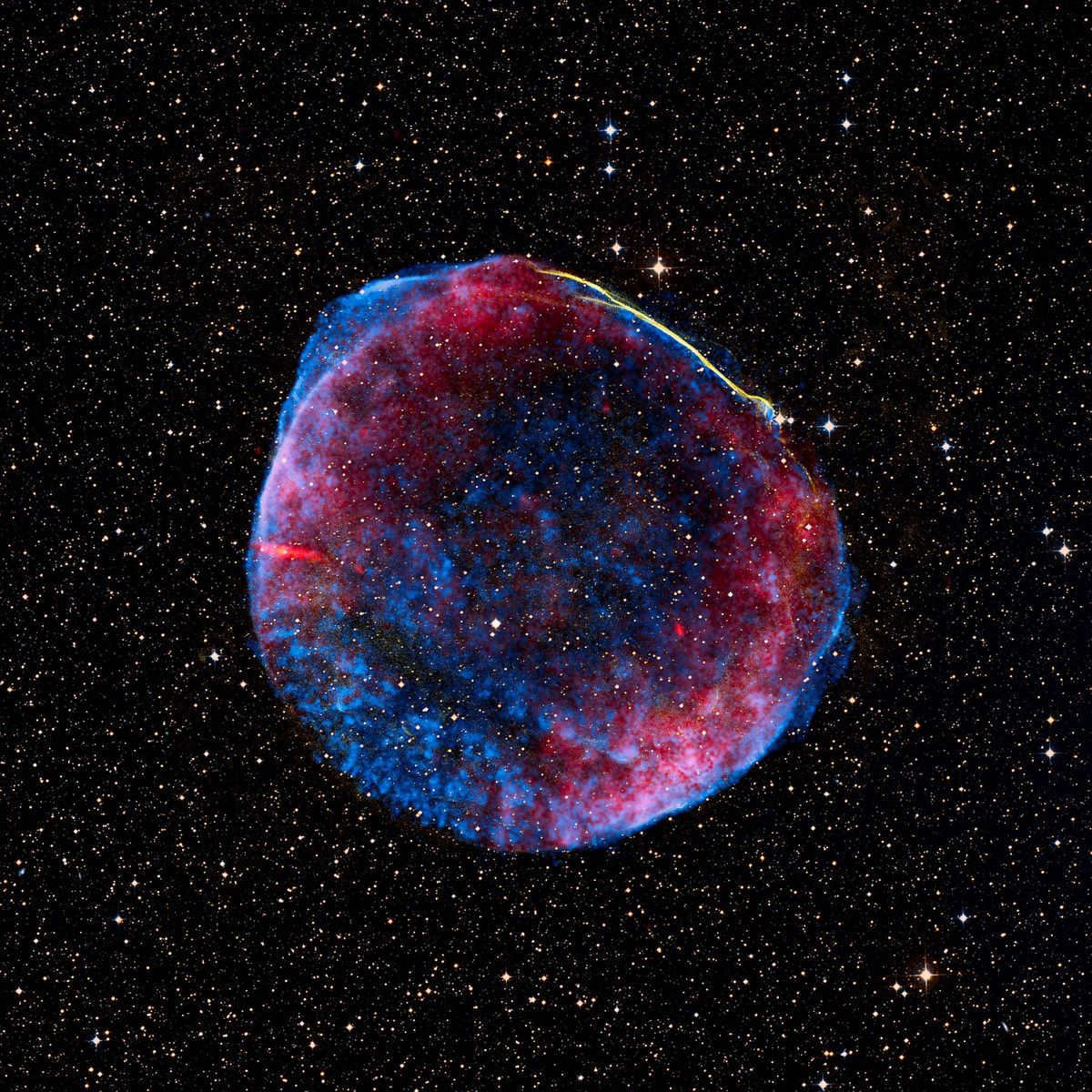

Location on the Hertzsprung-Russell diagram
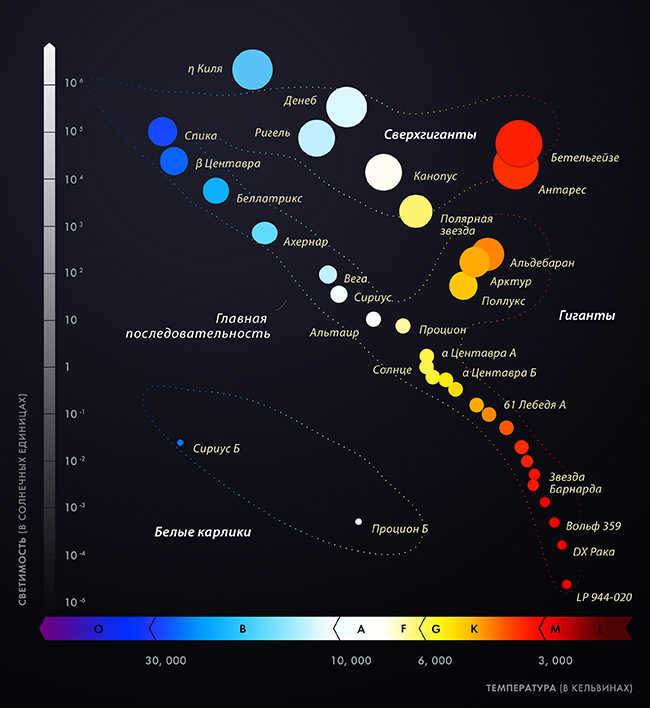
Within the chart, these stars are situated in the bottom left sector, being categorized as a subset of stars that have transitioned from the main sequence after being red giants. This area consists of hot, faint stars, making it the second most prevalent group among the stars that can be observed in the Universe.
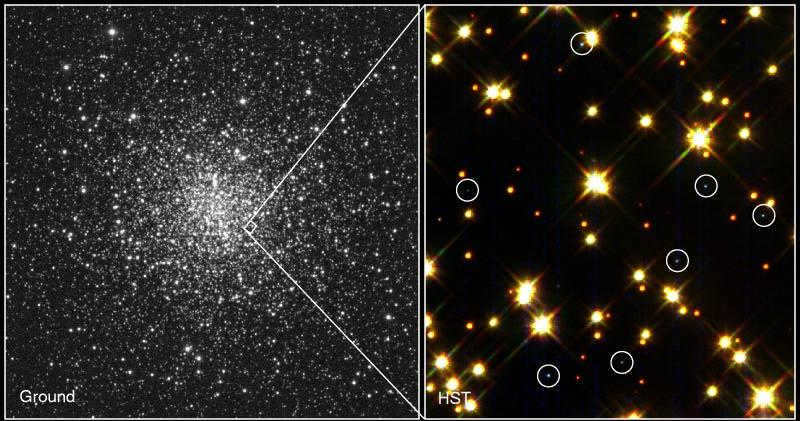
White dwarfs are assigned to a unique spectral category known as class D (derived from the term “dwarfs” or “dwarves”). However, in 1983, Edward Sion introduced a more refined classification system that takes into account the variations in their spectra. This new system includes a subclass designation (D) along with specific spectral characteristics and temperature indices. The subclasses within this system include DA, DB, DC, DO, DZ, and DQ, which indicate the presence or absence of hydrogen, helium, carbon, and metal lines in their spectra. Additionally, the spectral features P, H, V, and X further clarify the presence or absence of polarization, magnetic fields in the absence of polarization, variability, peculiarity, or unclassifiability of white dwarfs.
Fascinating information
1) Which white dwarf is the nearest to the Sun? The nearest one is van Maanen’s star, a faint entity situated a mere 14.4 light-years away from our solar system. This intriguing object can be found at the heart of the Pisces constellation.
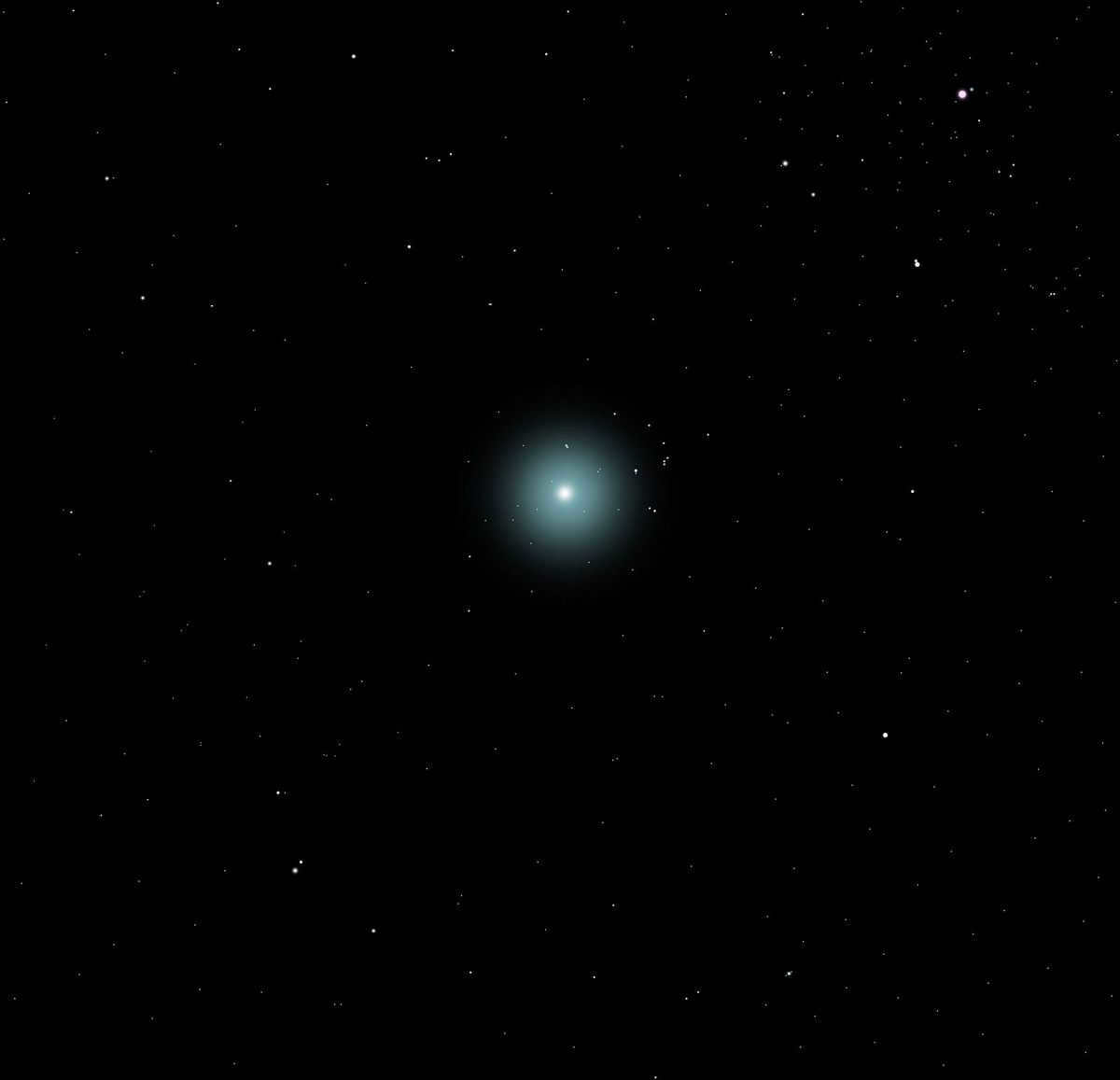
Van Maanen’s star cannot be observed without the aid of telescopes due to its low brightness, having a magnitude of 12.2. Nevertheless, when discussing white dwarfs in star systems, the nearest one is Sirius B, situated at a distance of 8.5 light-years. It is worth mentioning that Sirius B is renowned as the most well-known white dwarf.

2) The Dumbbell Nebula, also known as planetary nebula M27 (NGC 6853), is home to the largest white dwarf in the known universe. Situated in the constellation Foxy and situated approximately 1,360 light-years away, this white dwarf surpasses all others in size.
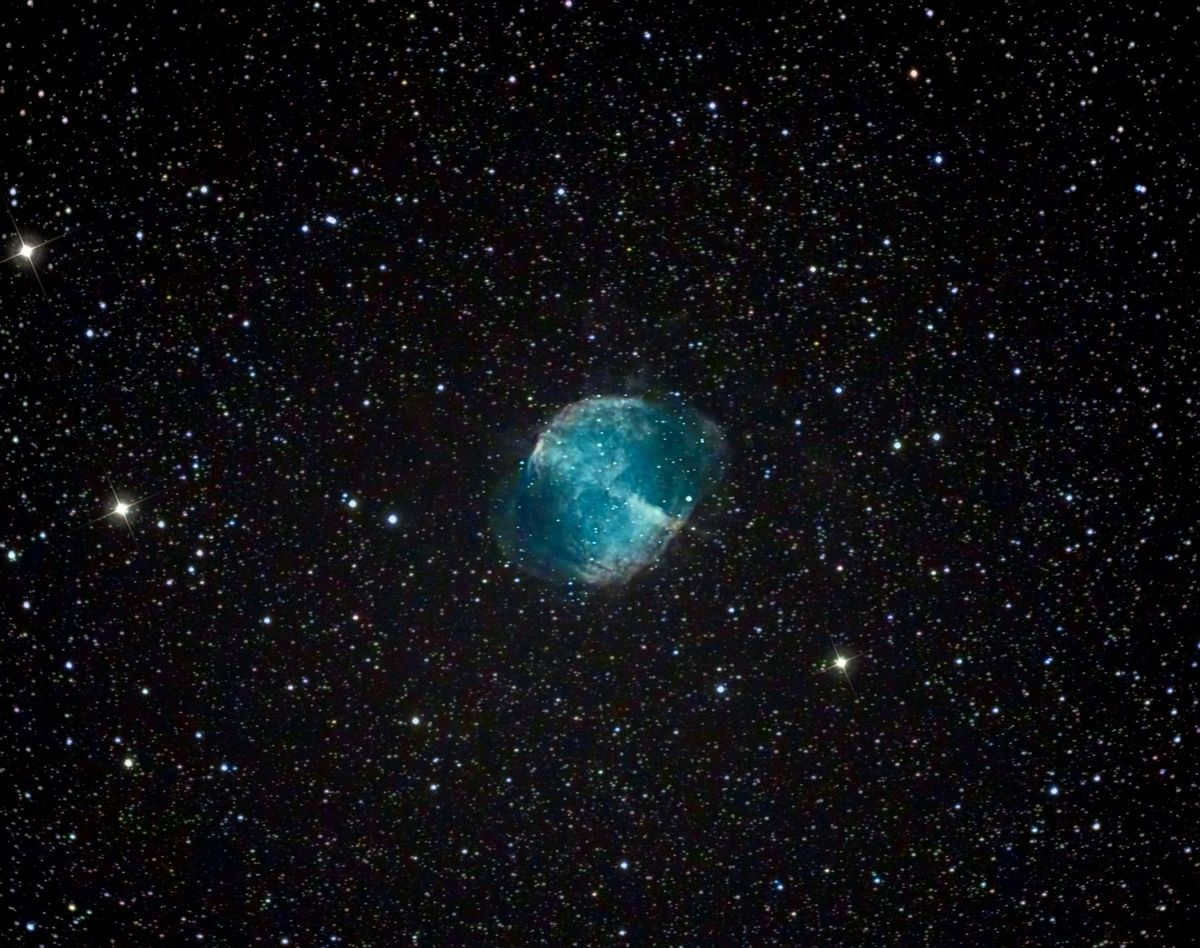
3) Located in the Dragon constellation about 43 light-years away from Earth, the white dwarf known as GRW +70 8247 holds the title for being the smallest of its kind. With a stellar magnitude of approximately 13, this celestial object can only be observed using a large telescope.
4) The lifespan of a white dwarf is determined by its rate of cooling. In some cases, enough gas accumulates on the surface of the white dwarf, causing it to undergo a Type Ia supernova. These stars have an incredibly long lifespan, lasting billions of years, with some even surviving for 10 to the 19th power years or longer. This lengthy lifespan is attributed to their slow cooling process, which is directly proportional to the fourth power of their temperature. Consequently, white dwarfs stand a good chance of enduring until the end of the Universe.
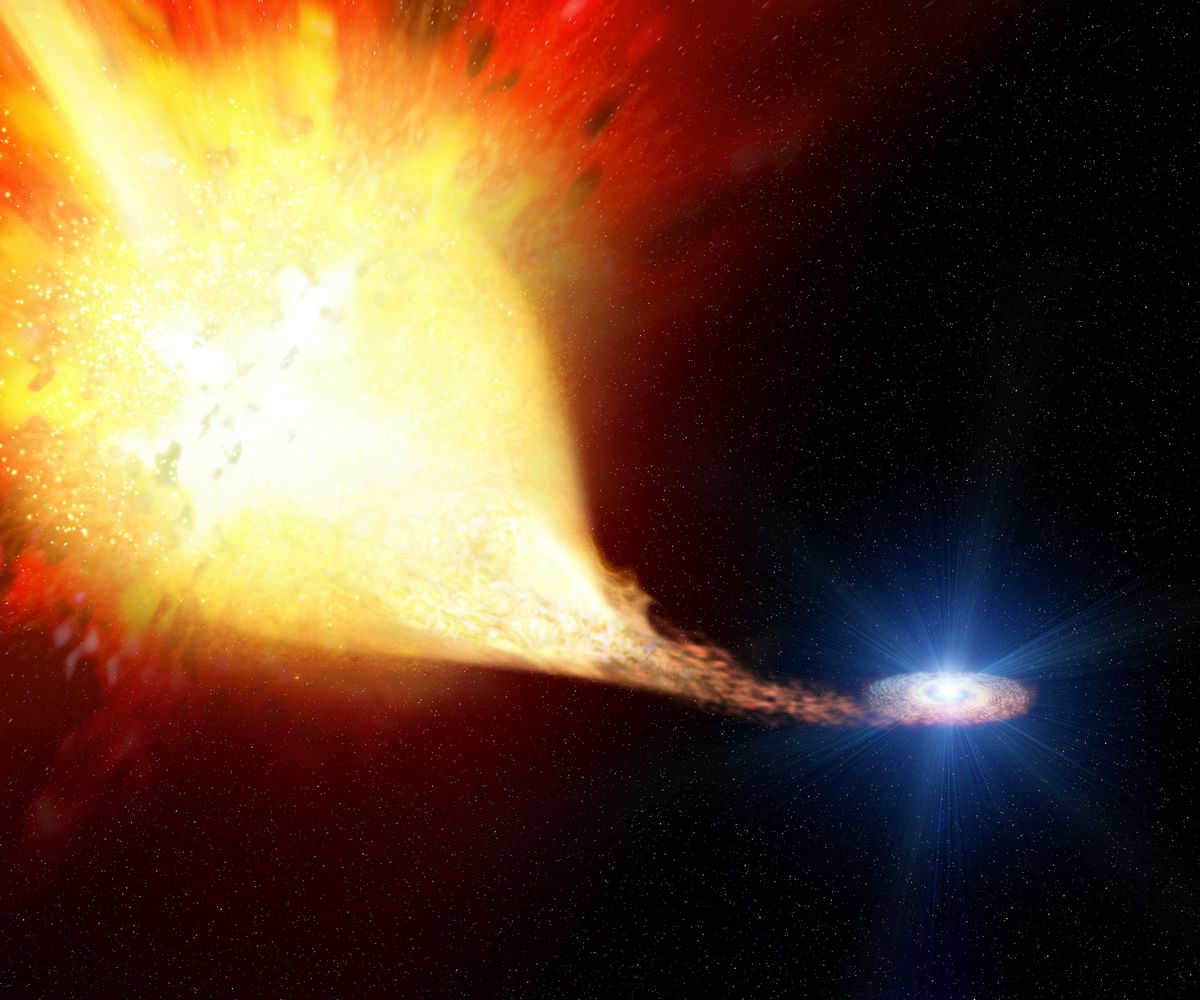

- Main
- Dark Forces
From a white dwarf to a black hole
White dwarf
For stars with masses below a certain critical mass, the process of gravitational contraction halts at what is known as the “white dwarf” stage.
The density of a white dwarf exceeds 10^7 g/cm^3, and its surface temperature is approximately 10^4 K. At such high temperatures, atoms are expected to be fully ionized, with the star’s nuclei submerged in a sea of electrons, thus forming a degenerate electron gas. The pressure exerted by this gas serves to prevent any further gravitational collapse of the star.
The pressure exerted by the degenerate electron gas is a consequence of the Pauli principle, which governs the behavior of electrons.
Pauli’s principle defines the minimum amount of space that each electron can occupy, which cannot be decreased by external pressure. In a white dwarf, all electrons have reached this minimum volume, and the gravitational compression is balanced by the internal pressure of the electron gas.
The mass limit of a white dwarf is approximately 1.5Ms, which is known as the Chandrasekar limit (Ms represents the mass of the Sun, approximately equal to 1.99 x 1030 kg).
It is commonly accepted that the maximum mass for a white dwarf is 1.4Ms. Therefore, the electron degeneracy pressure is unable to sustain masses larger than 1.4Ms. For white dwarfs with masses between 0.5Ms and 1.4Ms, the core is composed of carbon and oxygen. If the mass is less than 0.5Ms, the core of the white dwarf consists of helium.
The density of a white dwarf with a mass similar to Chandrasekar’s is 6×10 6 g/cm 3, with a radius of 5×10 3 km.
The luminosity of white dwarfs ranges from 10 -2 to 10 -4 of the Sun’s luminosity. The thermal energy stored within them is responsible for their radiation.
Neutron star
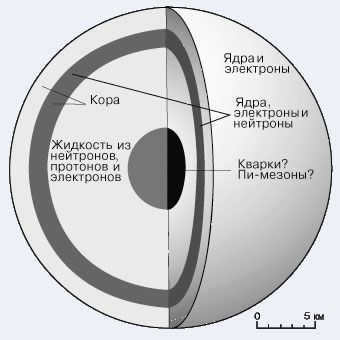
Calculations indicate that when a supernova explodes with a mass of about 25 times that of the Sun (M ~ 25Ms), it leaves behind a compact core made of neutrons called a neutron star, which has a mass of approximately 1.6 times that of the Sun (mass ~ 1.6Ms).
In stars with a remaining mass (M) greater than 1.4 times that of the Sun (M > 1.4Ms) that have not yet reached the supernova stage, the pressure from the degenerate electron gas is also unable to counterbalance the gravitational forces, causing the star to collapse to a state of nuclear density. This gravitational collapse mechanism is the same as that in a supernova explosion.
The pressure and temperature inside the star become so extreme that electrons and protons appear to merge together, resulting in a reaction.
Conversion of protons and electrons into neutrons and electron neutrinos
After the process of neutrino ejection, neutrons are generated, occupying a significantly smaller phase volume compared to electrons.
Formation of a Neutron Star
A neutron star, also known as a pulsar, is formed as a result of this process. It has an incredibly high density ranging from 1014 to 1015 g/cm3. The characteristic size of a neutron star is about 10-15 km.
Essentially, a neutron star can be considered as a colossal atomic nucleus.
Further gravitational compression is impeded by the nuclear matter pressure generated by the interaction of neutrons. This pressure is known as degeneracy pressure, similar to the phenomenon observed in white dwarfs, but in this case, it is the degeneracy pressure of an extremely dense neutron gas. This pressure is capable of supporting masses up to 3.2 times the mass of the Sun.
Detecting neutron stars through optical means presents a significant challenge due to their diminutive size and low temperature.
At the University of Cambridge in 1967, Hewish and Bell made a groundbreaking discovery of cosmic sources emitting periodic electromagnetic radiation, known as pulsars. Pulsars typically have pulse repetition periods ranging from 3.3-10 -2 to 4.3 seconds.
As indicated by contemporary theories, pulsars are neutron stars that rotate and have masses ranging from 1 to 3 solar masses and diameters between 10 and 20 kilometers.
Only compact objects exhibiting the properties of neutron stars can withstand the immense rotational velocities without collapsing.
The conservation of angular momentum and magnetic field during the formation of neutron stars gives rise to the creation of rapidly rotating pulsars with a magnetic field strength of approximately 10^12 Gauss.
The magnetic induction vector, denoted as B, serves as the primary characteristic for measuring the force of the magnetic field. In the centimeter-gram-second (CGS) system, it is quantified in Gauss (Gs), while in the International System of Units (SI), it is measured in Tesla (Tl). One Tesla is equivalent to 10^4 Gauss.
A neutron star is thought to possess a magnetic field that is not aligned with the star’s rotational axis. As a result, the star’s radiation, including radio waves and visible light, sweeps over the Earth in a manner similar to a lighthouse beam. When this beam intersects the Earth, it generates a detectable pulse.
The emission from the neutron star occurs when charged particles from the star’s surface travel outward along the magnetic field lines, emitting electromagnetic waves. This process of pulsar radio emission, initially theorized by Gold, is illustrated in the diagram below.
Pulsar Model
When an Earth observer is hit by the radiation beam, a radio telescope records short bursts of radio emission that have a duration equal to the rotation period of the neutron star.
The shape of the burst can be highly intricate, and this complexity is a result of the neutron star’s magnetosphere geometry, which is unique to each pulsar.
Pulsar rotation periods are incredibly precise, with measurements reaching an accuracy of 14 decimal places.
Recently, pulsars that are part of binary systems have been discovered. If the pulsar is in orbit around a second component, variations in its rotation period caused by the Doppler effect should be observable.
When an observer detects a pulsar approaching, the recorded period of radio pulses decreases due to the Doppler effect. Conversely, when the pulsar moves away from the observer, its period increases. This interesting phenomenon has led to the discovery of pulsars that are part of double star systems.
The first pulsar to be detected, PSR 1913 + 16, is part of a double system and has an orbital period of 7 hours and 45 minutes. The proper orbital period of this pulsar is 59 ms.
Interestingly, the radiation emitted by the pulsar can actually cause a decrease in the rotational velocity of the neutron star. This effect has been observed and studied. Furthermore, it is worth noting that a neutron star that is part of a double system can also emit intense X-ray radiation.
The gradual increase in mass of the white dwarf occurs as a result of the spillover of matter from the companion star. Once the white dwarf reaches the critical mass, known as the Chandrasekar limit, it undergoes a transformation into a neutron star.
If the flow of matter continues after the formation of the neutron star, its mass can undergo a significant increase. This increase in mass can lead to a gravitational collapse, resulting in the formation of a black hole. This phenomenon is referred to as a “quiet” collapse.
The phenomenon known as a black hole
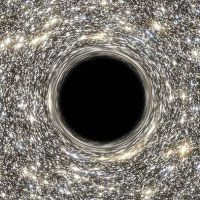
There is a boundary to the size of a star that can be maintained in equilibrium by densely packed neutrons. This boundary cannot be precisely determined because the behavior of matter at densities significantly higher than that of nuclear matter is not well comprehended.
Approximations of the size of a star that can no longer be supported by degenerate neutrons yield a value of approximately 3Ms.
Therefore, if the supernova explosion retains a remaining mass M > 3Ms, it cannot continue to exist as a stable neutron star.
Nuclear forces of repulsion become powerless against the relentless gravitational compression of the star, resulting in the birth of a remarkable celestial entity – a black hole.
The defining characteristic of a black hole is its ability to trap any signals within its boundaries, preventing them from reaching an external observer.
When a star of mass M undergoes a collapse, it condenses into a sphere with a radius of rg (known as the Schwarzschild sphere):
(By assuming the limiting value of the second space velocity vk2 = (2GM/R) 1/2 in the well-known formula, this relation can be formally reached, which is equal to the speed of light).
When an object grows to the size of a Schwarzschild sphere, its gravitational field becomes so powerful that even electromagnetic radiation cannot escape from it. The Schwarzschild radius of the Sun is 3 km, and the Earth’s Schwarzschild radius is 1 cm.
A Schwarzschild black hole refers to non-rotating objects and is the leftover of a massive non-rotating star. A rotating massive star collapses into a rotating black hole (Kerr black hole).
Indirect evidence is the only way to detect a black hole, especially if it is part of a binary star system with a visible star. In such cases, the black hole will attract and consume the star’s gas, which will then heat up and emit intense X-ray radiation that can be detected.
Currently, there is no direct experimental proof of the existence of black holes. However, there are certain cosmic objects that exhibit behavior that can be explained by the presence of black holes.
For instance, there is a celestial object called Swan XI, which is a binary system with a period of 5.6 days. The system consists of a blue giant star with a mass of 22Ms, and there is also an invisible source of pulsating X-rays with a mass of 8Ms, which is likely a black hole (as an object with such a large mass cannot be a neutron star).
Aside from black holes that are formed from the collapse of stars, there exist black holes in the cosmos that emerged long before the initial appearance of stars, as a result of the unevenness of the Big Bang.
These clusters of matter that resulted may have contracted into black holes while the rest of the matter expanded. Black holes that formed in the early stages of the Universe are referred to as relic black holes. It is theorized that some of these black holes may be significantly smaller than the size of a proton.
In 1974, Hawking demonstrated that black holes must emit particles. The origin of these particles lies in the process of the creation of virtual particle-antiparticle pairs in a vacuum. In normal fields, these pairs annihilate so rapidly that they cannot be detected. However, in extremely strong fields, virtual particles and antiparticles can separate and become real.
At the boundary of the black hole, there exist potent tidal forces. These forces cause certain particles (as well as antiparticles) from the virtual pairs to escape the black hole. As a result of the annihilation of many of these particles, the black hole becomes a radiation source.
The energy that the black hole emits into space originates from its interior. Consequently, during the process of particle emission, the black hole’s mass and size must diminish. This is the process of black hole “evaporation”.
The temperature of a black hole is proportional to the inverse of its mass, meaning that black holes with larger masses evaporate at a slower rate. The lifetime of a black hole is directly proportional to the cube of its mass in four-dimensional space-time. For instance, a black hole with a mass similar to that of the sun will have a lifetime that exceeds the age of the universe. On the other hand, a micro black hole with a mass of 1 teraelectronvolt (10^12 eV, approximately 2×10^-30 kg) will only exist for about 10^-27 seconds (Science and Life, BLACK HOLES).
In the case of large black holes, the process of “evaporation” occurs at an extremely slow rate and can essentially be disregarded. For example, a black hole with a mass of 10 solar masses will take around 10^69 years to evaporate. Supermassive black holes, which can have masses in the billions of solar masses and are often found at the centers of galaxies, may have an evaporation time of approximately 10^96 years.
Cited with abbreviations
Source
Video: The most savage and monumental detonations in the cosmos. Galactic, stellar, and planetary eruptions.
It was proposed fifty years ago that the cooling process in the inner regions of white dwarfs leads to the crystallization of carbon and oxygen. This crystal formation releases heat, which slows down the cooling rate of the star. In approximately 10 billion years, our Sun will undergo a similar transformation into a crystalline white dwarf. In January 2019, scientists from the United Kingdom, Canada, and the United States presented evidence supporting this unusual model of stellar evolution at the American Astronomical Society conference.
This research has been published in the journal OYLA NO. 2(42). You can subscribe to the printed and online versions of the journal here.
A corrupted epsilon symbol,
He tightly grasped the small person in his hand,
And the faint individual transformed into a crystalline structure.
And the diminutive individual exclaimed, “Hold on, David,
Cease your squeezing,
I could also excel in the field of astrophysics!”
This verse originates from a humorous tune crafted by Andrei Linde to commemorate the 60th birthday of his mentor, D.A. Kirzhnitz.
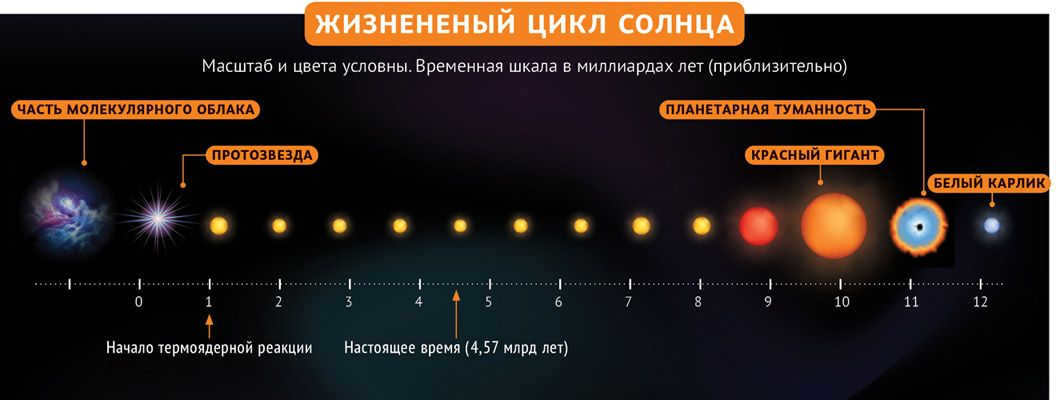
Belymi karlikami – are the smoldering remnants of stars that are not particularly massive and have exhausted their nuclear fuel, consequently facing a gradual decline. All stars sustain themselves through fusion reactions, beginning with the conversion of hydrogen into helium. The least massive stars, known as red dwarfs, reach the end of their cycle at this stage, while the more massive stars generate heavier elements towards the end of their lifespan.
If a star has an initial mass of no more than eight times that of the Sun, it will undergo a process of nuclear fusion in its core, first producing helium and then carbon and oxygen. Once the helium fuel is depleted, the star enters its final stage of active life. During this stage, it burns off the remaining helium and undergoes a cataclysmic expansion and contraction, shedding its outer layers. Eventually, it becomes a white dwarf, with a core composed of carbon and oxygen surrounded by a hydrogen-helium plasma, heated to temperatures of tens of thousands of degrees.
A white dwarf typically has a mass between 0.5 and 1.3 times that of the Sun, and its radius is less than 0.01 times that of the Sun. The density at the center of a white dwarf can reach tens of tons per cubic centimeter. A newly formed white dwarf has a core temperature of approximately 100 million degrees Celsius, and it will take hundreds of billions, if not trillions, of years for it to completely cool down.

A white dwarf has a radius similar to that of Earth and a mass ranging from 0.6 to 1.44 times that of the Sun. The surface temperature of a white dwarf can reach up to 20,000 K.
However, there is an intricacy at play here. A white dwarf is a complex dynamic system comprised of multiple components. This is why it is considerably more challenging to dissipate heat compared to, for instance, a red-hot metal. The cooling process of a star is influenced by numerous processes occurring within its core and plasma envelope. One of the most paradoxical phenomena in this regard was foreseen in two articles published in 1960 by the Soviet “Journal of Experimental and Theoretical Physics”. The initial article was presented in August 1959 by a researcher from the Lebedev Physical Institute, David Kirzhnitz. The second article was authored by the future Nobel Prize laureate Alexei Abrikosov, who was employed at the Institute of Physical Problems at that time. A year later, the renowned astrophysicist Edwin Salpeter, who was a professor at Cornell University, also contributed to this topic.
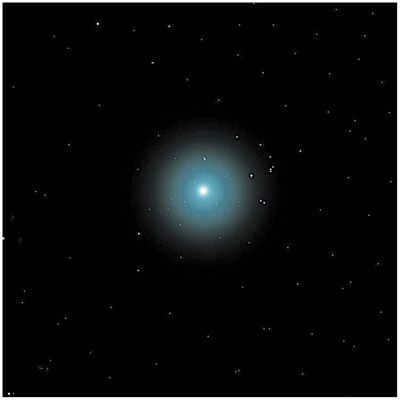
Van Maanen’s Star, which is located 14.1 light-years away from the Sun, is the closest single white dwarf. It is believed to have an age of 10 billion years and has a surface temperature of only 4000 K due to its advanced age.
All of these scientists used similar reasoning methods. Since the late 1920s, it has been known that the core of the white dwarf consists of positive ions (naked nuclei) of elements that were created during the final stages of thermonuclear fusion. However, astrophysicists struggled to determine when this fusion process comes to an end. Kirzhnitz suggested that the average atomic number of these elements is ten, which was close to the correct answer. In the Periodic Table of Elements, carbon is the sixth element, while oxygen is the eighth.
Due to the high compression of the matter in the core of the white dwarf, the newly formed atoms undergo a process where they lose electrons, resulting in a complete ionization. This leads to the formation of an incredibly dense electron gas, which interacts with carbon and oxygen ions in a unique way. Unlike ordinary air, this electron gas follows the principles of quantum mechanics. The electrons occupy various quantum states, each with a much higher energy level compared to thermal motion and electron-ion bonds. As a result, the density of the electron “sea” remains constant and is not affected by the motion of the ions.
In these conditions, the ions themselves behave as classical particles and interact with each other based on Coulomb’s law. This type of system is referred to as a Coulomb plasma.
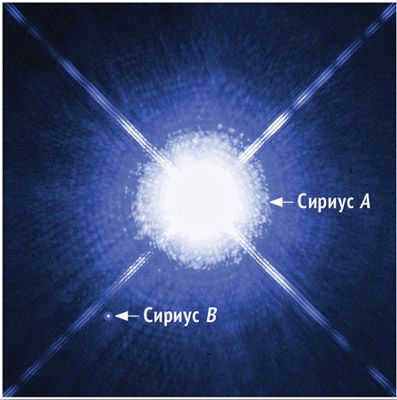
Sirius A, the most brilliant star in the night sky, has a small counterpart, the white dwarf Sirius B. With a diameter of 12,000 kilometers, Sirius B is approximately 10,000 times dimmer than Sirius A. The presence of a brighter companion star poses challenges in studying the white dwarf. Nevertheless, astronomers successfully isolated the light emitted by Sirius B and analyzed its spectrum. Through this analysis, they were able to determine the mass of the white dwarf, which is 98% of the mass of the Sun. Additionally, they were able to estimate the surface temperature of the dwarf to be 25,000 °C.
And now comes the most intriguing part. While the core of the dwarf star remains extremely hot, the ions within it exhibit a state of chaotic motion, akin to that of an ideal gas. However, as the temperature gradually decreases, the Coulomb interaction between the ions compels them to transition from disorder to a more ordered geometric arrangement. The ions, existing within the surrounding “sea” of electrons, begin to form a regular and periodic lattice structure, effectively rearranging themselves into a crystalline pattern. This transformation occurs because the lattice configuration possesses a lower energy state compared to the previously chaotic distribution. The crystallization process is energetically favorable for the ions, much like how water freezes at a temperature of zero degrees Celsius.
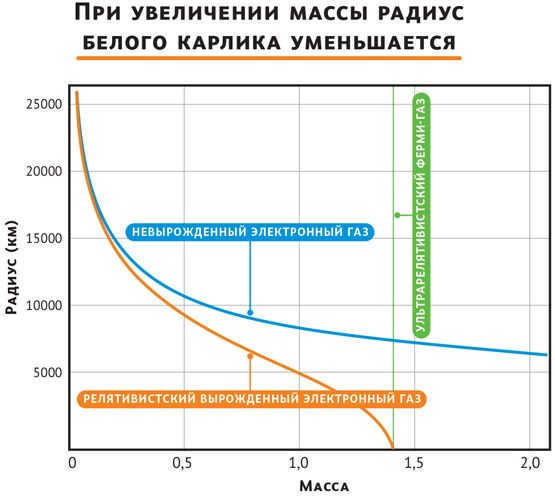
The precise amount of cooling required for crystallization to happen in a white dwarf is still not known, but an estimated answer was provided many years ago. In 1966, the renowned physicist Edward Teller, who is often referred to as the “father of the American hydrogen bomb,” conducted calculations which indicated that the phase transition temperature for crystallization was approximately 10 million degrees Celsius. Therefore, in order for the nucleus to solidify and form crystals, its initial temperature would need to decrease by a factor of ten.
One important conclusion that can be drawn from this is that the act of crystallizing any substance, be it water, molten iron, or a superdense Coulomb plasma, results in the release of heat. As a result, the process of crystallization should impede the cooling of the white dwarf’s core and have an impact on its luminosity. This occurrence can be observed by measuring the overall brightness of these stars, which is a task for astronomers and observers.
The problem of crystallization of white dwarf nuclei was first addressed in 1968 by Hugh van Horn, a professor of physics and astronomy at the University of Rochester. Hugh van Horn proposed a model for this process, drawing inspiration from the research conducted by Kirzhnitz, Abrikosov, and Solpiter. In his publication in the Astrophysical Journal, van Horn examined the data from a previous study that involved measuring the absolute brightness of 65 white dwarfs. Based on his analysis, he categorized the stars into two groups, with one group potentially consisting of white dwarfs with crystalline cores. However, van Horn later realized that his conclusion was premature, leaving the question regarding the validity of the model unanswered.

The luminosity of the white dwarf should reflect the process of core crystallization. In order to measure this, we need to determine its apparent brightness and distance from the solar system. Therefore, it was crucial to gather as much data as possible to validate the model accurately. A significant breakthrough occurred in 2009 when the results of observations on white dwarfs in the ancient globular star cluster NGC 6397, which is located 7800 light-years away from the Sun, were published. The data on their absolute luminosity strongly supported the crystallization model. Similar conclusions were drawn from observing other globular clusters – clusters of numerous stars that are tightly bound by gravity and orbit the galactic center.
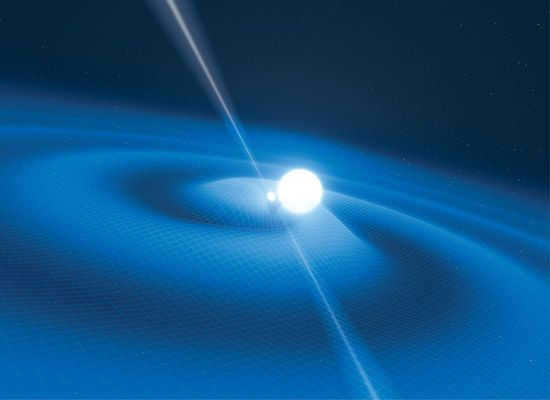
A binary system featuring a white dwarf
The issue of determining distance is resolved by studying globular clusters. This is because the cluster’s cross-section is significantly smaller than its distance from the Sun, allowing all observed stars to be considered at equal distances. However, these clusters typically consist of stars of the same age and are generally quite ancient. To effectively test the predictions made by Kirzhnitz, Abrikosov, and Solpeter, we required data on the luminosity of white dwarfs with varying ages and initial masses.
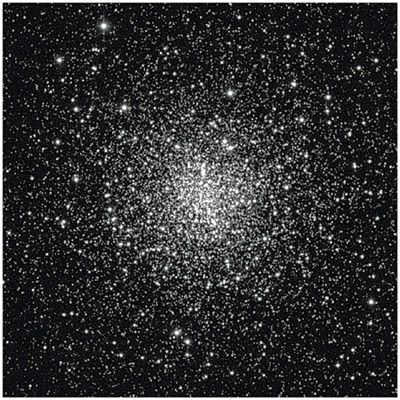
M4, the fourth item in Messier’s catalog of star clusters and nebulae, is the nearest globular cluster to our planet. It is home to over 100,000 stars and has been the subject of observation by the Hubble telescope in its quest to discover white dwarfs. The cluster is located at a distance of 7,000 light years from Earth.
NGC 6302: A Remarkable Planetary Nebula
Located in the constellation Scorpius, NGC 6302 is a stunning bipolar planetary nebula. This nebula, which was discovered by the Hubble telescope in 2009, features a central star that is classified as a white dwarf. With a surface temperature that exceeds 200,000 °C, this star is incredibly hot.
The distance of NGC 6302 from Earth is an astounding 3,392 light-years.
Date of discovery: 1880.
Diameter: 3 light-years.
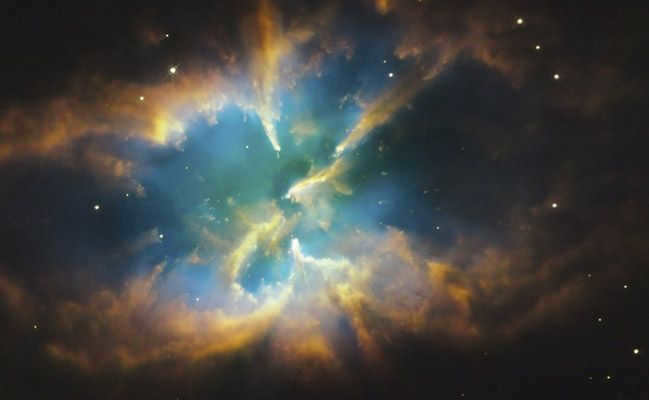
The Compass constellation’s planetary nebula NGC 2818
The stellar core, resembling a hot white dwarf, that remains after the explosion, will undergo cooling for millions of years.
Earth’s distance: 10,400 light years.
Discovery date: 1826.
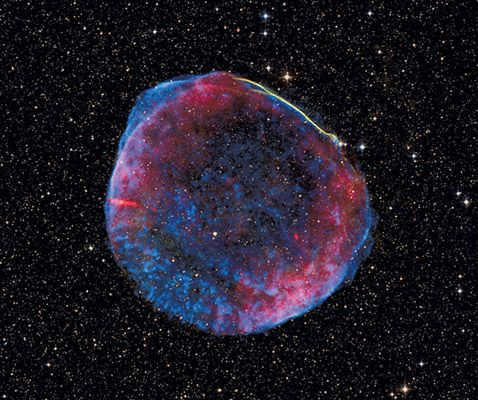
SN 1006 Supernova remnant
SN 1006 is the result of a cataclysmic event involving a white dwarf star that was part of a binary system. Over time, the white dwarf accreted matter from its companion star, eventually reaching a critical mass that triggered a powerful thermonuclear explosion, tearing the dwarf apart.
Distance from Earth: SN 1006 is located approximately 1,250 light-years away from our planet.
Date of discovery: The supernova remnant was first observed in 1764.
Diameter: SN 1006 has a diameter estimated to be between 3000 and 4000 light-years.
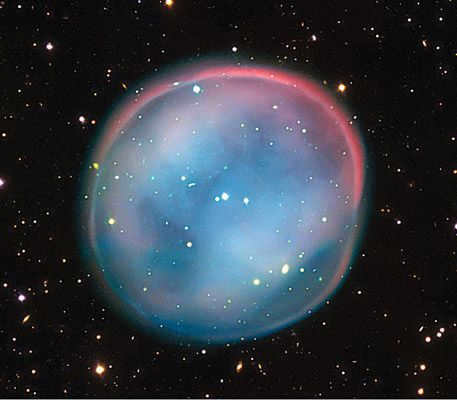
Boomerang Protoplanetary Nebula (NGC 40)
The temperature of the nebula is just a degree above absolute zero, making it one of the coldest regions in the entire Universe. The central star of this nebula is moving at an incredible speed of 164 kilometers per second.
Distance from Earth: 5,000 light years.
Date of its discovery: 1980.
Temperature: -272 °C.
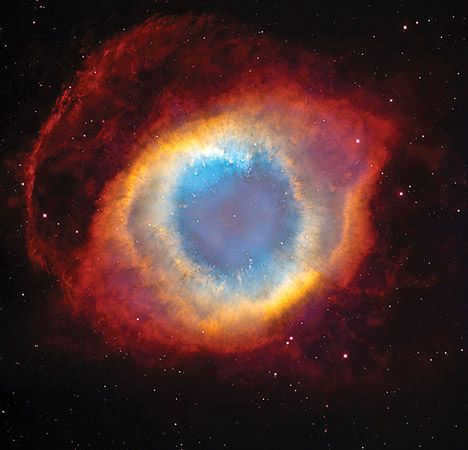
The Snail Nebula (NGC 7293)
The Snail Nebula, also known as NGC 7293, came into existence as a result of the culmination of the life cycle of a star similar to our Sun. What remains of this star is a white dwarf.
The distance from Earth to the Snail Nebula is approximately 650 light years.
The discovery of the Snail Nebula took place in 1824.
The Snail Nebula is estimated to be around 10,600 years old.

The Dumbbell Planetary Nebula M27 (NGC 6853)
Situated in the constellation Vulpecula, this nebula boasts the most extensive white dwarf at its core.
Distance from Earth: 1,250 light-years away.
Discovered in: 1764.
Age: Estimated to be between 3000 and 4000 years old.
Recently, this valuable information has become accessible and has been utilized by Pierre-Emmanuel Tremblay and his colleagues at Warwick University. They utilized the second report from the European space observatory Gaia, which was published in 2018, as their primary data source. The Gaia report provides precise measurements of the apparent brightness of stars and their annual parallaxes, allowing for accurate determination of their distances. Tremblay and his team analyzed data on the luminosity and masses of 15,000 white dwarfs located within 100 parsecs (320 light-years) from our position. This groundbreaking research represents the first time that scientists have been able to study a truly representative population of these stars.
But that’s not the end of the story. Back in the late 1980s and early 1990s, scientists predicted that the cooling process of a white dwarf would be further inhibited by the gradual sinking of carbon and oxygen nuclei towards the star’s core, as it begins to crystallize. As these nuclei sink, they release gravitational energy, which is then converted into heat, preventing the star from cooling down. Additionally, this process causes the ratio of oxygen concentration to carbon concentration to increase. The reason behind this is that oxygen crystallizes at a faster rate than carbon, leading to its accumulation in the center of the white dwarf. Tremblay and his team have now provided evidence that supports this prediction.


